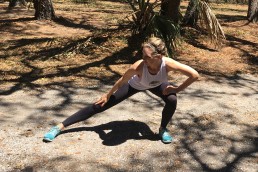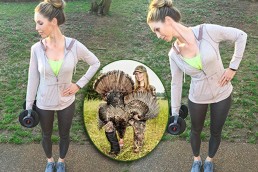Stretching it Out
SHARE THIS POST
Many fitness articles focus on weight training, cardiovascular exercise or tips on how to build muscle or lose weight. One oft-overlooked part of fitness is stretching. Sure, it’s not as glamorous as some of the other categories in the fitness world, but it’s just as crucial. In fact, many professional athletes devote many hours every week to proper stretching techniques.
As we age it seems like our bodies feel sorer after every activity we do. I know that sometimes I wake up in the morning and have to really think about what I did the day before to make my body hurt like it does. Typically, it’s because I’ve been in the field climbing up mountains or running over rough terrain. But occasionally it’s because I moved too quickly or surprised my muscles with a new exercise.
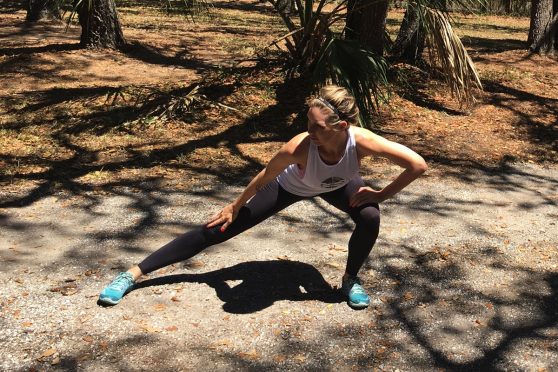
If you take a few minutes a day, preferably before and after your workout or any strenuous activity, to practice proper stretching, you might find that your body reacts more quickly to what you ask it to do.
Here are a few of my favorite stretches, tips to remember, and also some examples of why I would focus on that particular stretch before or after a certain activity:
- Warm up prior to stretching by walking, lightly jogging in place or other gentle movements. Never stretch cold muscles
- Take deep breaths while stretching to provide oxygen to your muscles
- Focus on holding each stretch for around 30 seconds
- Stretch near a mirror so you can check your posture and form
- Remember to stretch after your workout or activity
Stretch 1: Side Warrior
There are many different variations of this stretch, but this is how I like to do it. I keep one leg straight with wide feet, and then bend the other knee. Keeping the knee directly above the ankle on the bent leg, lean into the stretch until you feel the inner thigh and hamstrings slightly stretching. I hold this pose on each side for 30 seconds after I do any type of cardio like running or biking. It’s also a good stretch in the field after hiking all day and your muscles feel like they may be contracting due to being overworked.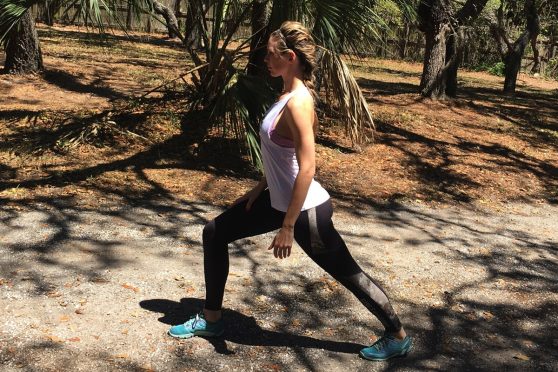
Stretch 2: Warrior
Athletes often use this stretch after they have strained their leg muscles in training. When properly executed, it will stretch many of the leg muscles simultaneously. You may also use a wall or stable piece of furniture to balance yourself against. For an extra stretch, push against a wall for some resistance. Keep your back leg straight while bending the forward leg at the knee. Keep the knee above the ankle and dip down into the stretch with your bodyweight. Be sure to keep your spine straight and your head lifted up.
Are you enjoying this post?
You can be among the first to get the latest info on where to go, what to use and how to use it!
Stretch 3: Quad Stretch
This one may require that you use something to balance yourself. Don’t fall over. This stretch is for your quads, but be sure not to try this one if you haven’t warmed up your muscles. This is one of my favorite stretches after I do anything that gives my thighs a workout. Hiking mountains, riding a bike or running are best followed up with this simple stretch. If you have good balance, give it a try for 20 to 30 seconds without holding on anything for support. If you feel like you might fall over, be sure to hold on to something for safety.
Stretch 4: Upper Back Stretch
In an accompanying photo, I am doing an advanced upper back stretch. But you can keep your head slightly up more and not push forward as much for a lighter and safer stretch if you’re just beginning. This is a stretch that I typically use after shooting my bow because I use my shoulder and upper back muscles to draw the bow back multiple times. I also use this after lifting weights that put tension on my upper back or shoulders. This stretch is also a good way to wake up in the morning. Try this right when you get out of bed to awaken your upper body.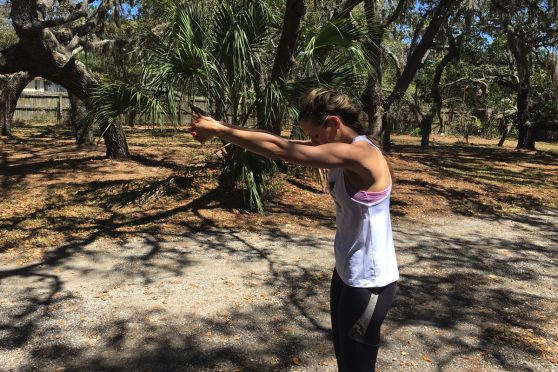
When stretching any muscle groups be sure to pay attention to what your body is telling you. If you feel any type of pain or discomfort, discontinue the stretch immediately.
You should not feel pain from stretching, whether it’s dynamic stretching (moving your body in order to stretch) or static stretching (like the images shown, where you perform a stretch and hold it steady for a period of time).
We all want to be healthy and get some exercise, and by adding a complete stretching routine to your workout you can maximize your efforts and help your body become even more adaptive and prevent injury.
MWO
SHARE THIS POST
You may also like...
Did you enjoy this post?
You can be among the first to get the latest info on where to go, what to use and how to use it!
Julie McQueen
Send Julie McQueen your outdoors-specific exercise and nutrition questions, at any of our social media pages. Like us at facebook.com/MidWestOutdoorsTV, facebook.com/JulieMcQueen.brotherhood, and follow our Instagram feeds @mwoutdoor and @julesmcqueen. “Fitness for the Field” is peer-reviewed by trainers and nutritionists at UpLift Guided Fitness in Woodbury, Minn. Eat healthy for the rest of your outdoor-loving life at upliftfitness.com/21dayoffer.
